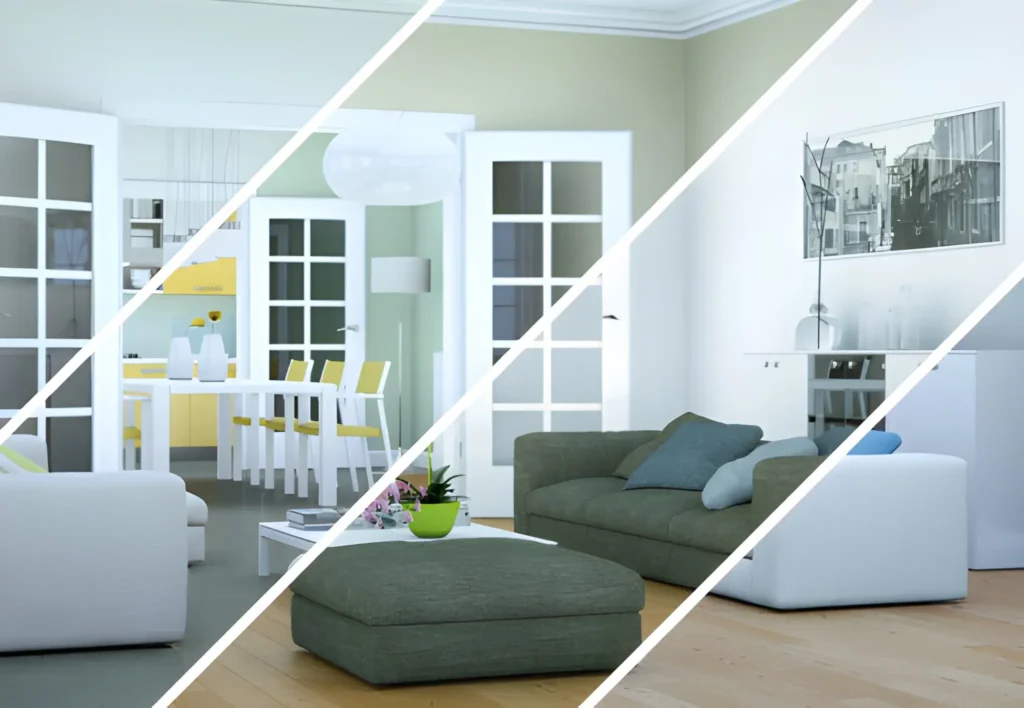Creating a home that feels authentically yours means choosing furniture that reflects your lifestyle, aesthetic preferences, and how you actually live day-to-day. Shopping at a furniture shop hoppers crossing gives you options, but the real challenge is narrowing down what works for your specific situation rather than just what catches your eye. This requires understanding different design styles and their characteristics, assessing your practical needs honestly, and knowing which compromises are worth making and which aren’t. This article breaks down popular furniture styles, how to identify what appeals to you beyond just “I like that,” matching furniture choices to your actual habits, and techniques for mixing styles without creating chaos.
Identifying Your Actual Style Preferences
Most people don’t naturally speak in design terminology like “mid-century modern” or “transitional,” but you can figure out your preferences by looking at what consistently appeals to you. Start simple—do you gravitate toward clean lines or ornate details? Light colors or rich darks? Minimal or decorated?
Save images of rooms and furniture you like, even if you can’t articulate why. After collecting 20-30 images, patterns emerge. Maybe everything has warm wood tones and natural textures. Maybe it’s all neutral colors with pops of bold accent colors. Maybe curved edges show up repeatedly versus sharp angles.
Consider your reaction to different furniture periods. Traditional furniture with detailed carvings and formal arrangements might feel stuffy to you or comfortingly classic. Modern minimalism either feels clean and sophisticated or cold and unwelcoming. There’s no wrong answer—it’s about what resonates.
Think about hotels or restaurants where you felt immediately comfortable. What style were they? That environment made you relaxed for a reason, and you can chase that feeling in your own space.
Your existing wardrobe offers clues too. If you dress in structured, tailored pieces, you might prefer more formal furniture styles. If your closet is casual and relaxed, super formal furniture might feel incompatible with your overall aesthetic.
Understanding Major Furniture Style Categories
Modern style emphasizes clean lines, minimal ornamentation, and functional design. Materials like metal, glass, and smooth wood dominate. Colors tend toward neutrals with strategic pops of bold color. This works well for people who like uncluttered spaces and straightforward aesthetics.
Contemporary furniture is what’s current now—it evolves constantly but currently features softer edges than modern, comfortable fabrics, and mixed materials. It’s less stark than pure modern but still relatively simple.
Traditional style pulls from classic European design periods—think carved wood details, rich fabrics like velvet and silk, formal arrangements, and symmetry. This appeals to people who want a sense of established elegance and don’t mind more decorative elements.
Transitional bridges traditional and contemporary—it’s probably the most popular style because it’s accessible and livable. You get comfortable, classic shapes without being too formal, updated with cleaner lines and modern fabrics.
Industrial style borrows from warehouses and factories—exposed metal, raw wood, visible hardware, and utilitarian forms. It works particularly well in lofts or open spaces and appeals to people who like the “authentic materials” aesthetic.
Scandinavian design prioritizes functionality, simplicity, and natural materials—particularly light woods. It’s cozy despite being minimal, emphasizing hygge (coziness and contentment). Great for people who want simplicity without coldness.
Coastal or beach style uses light colors, natural textures like rattan and linen, and relaxed forms. It creates airy, casual spaces that feel like vacation homes.
Matching Furniture to How You Actually Live
If you have kids and pets, white linen sofas are objectively a bad decision regardless of how beautiful they look. Be honest about your life—do you eat on the couch? Then you need furniture that handles spills. Got dogs that shed? Light-colored upholstery becomes a nightmare.
Think about your entertaining style. Do you host big gatherings regularly? You need more seating and flexible arrangements. Prefer intimate dinners with close friends? A smaller dining table and fewer chairs might actually work better.
Your work-from-home situation affects needs significantly. If you’re home all day, invest in your primary spaces—office chair, living room seating, kitchen setup. These get constant use and poor quality shows fast.
Consider your tidiness honestly. Some furniture styles hide clutter better than others. Open shelving looks great but requires constant organization. Closed cabinets contain the chaos. If you’re not naturally neat, plan for storage that keeps mess hidden.
Physical comfort matters more as you age. That firm modern sofa that looks amazing might be uncomfortable for extended sitting. Deeper, softer seating becomes more appealing when you’re actually using it for hours daily.
Also Read-Customer Segmentation Models That Drive Retention in Fintech


